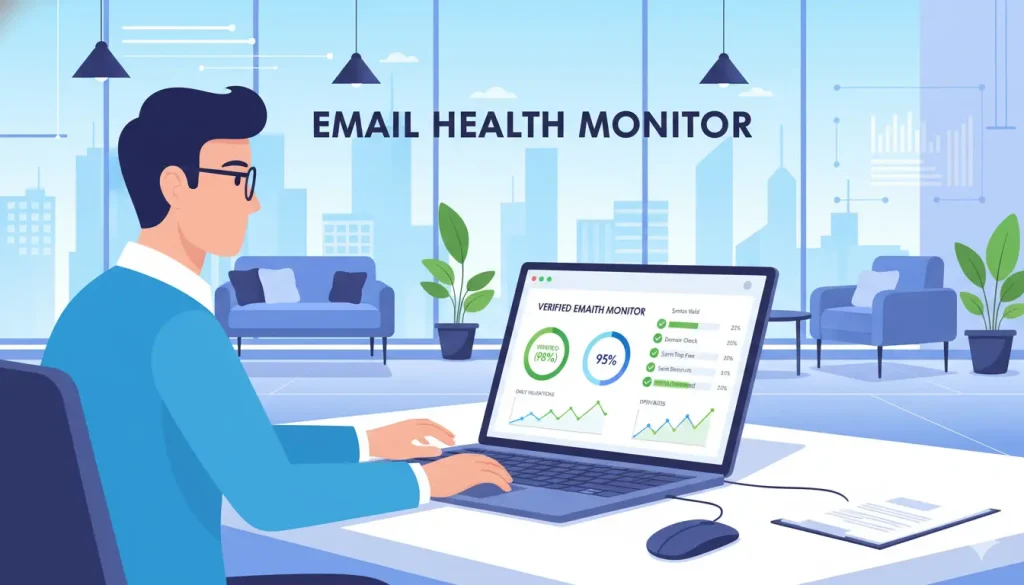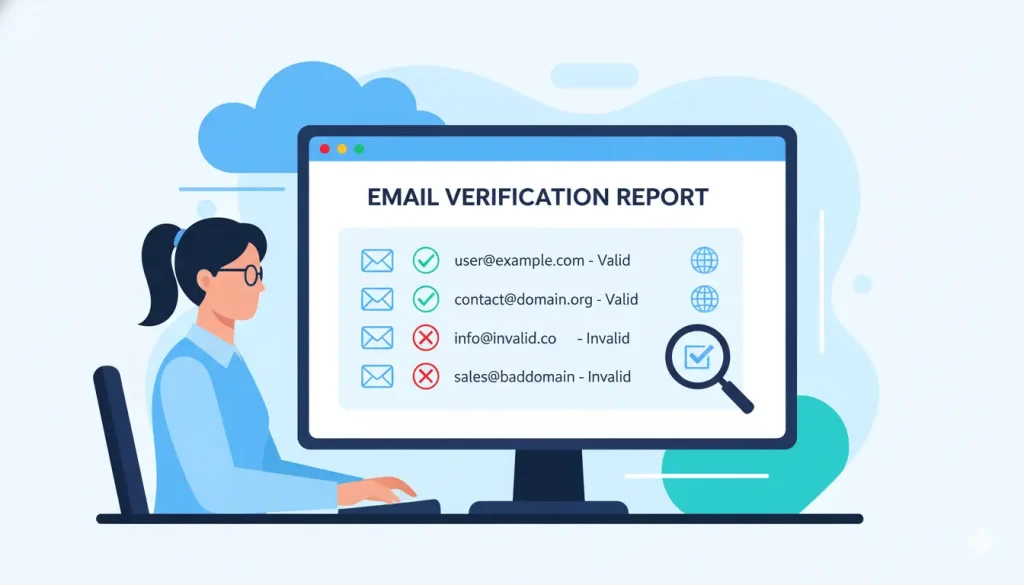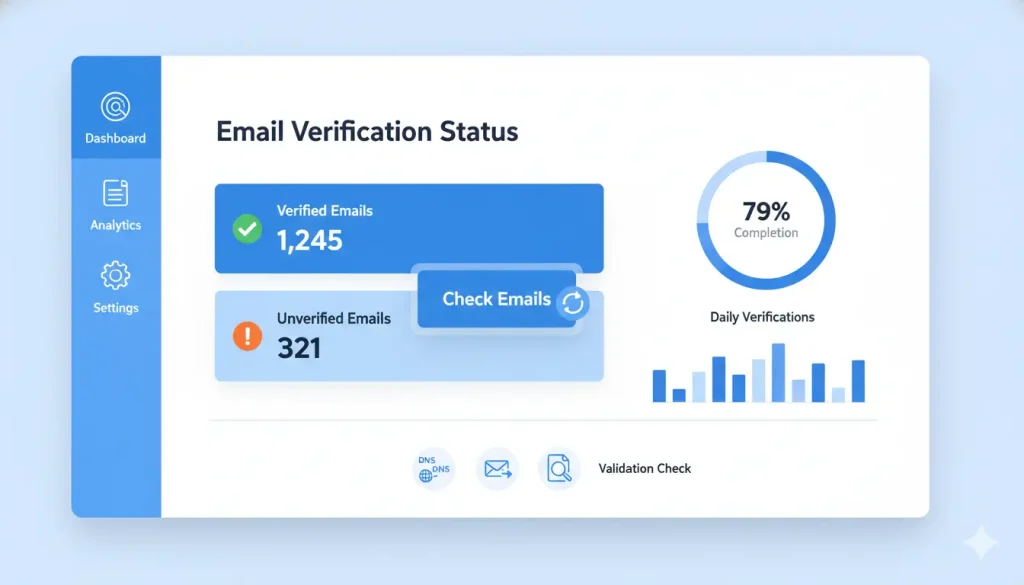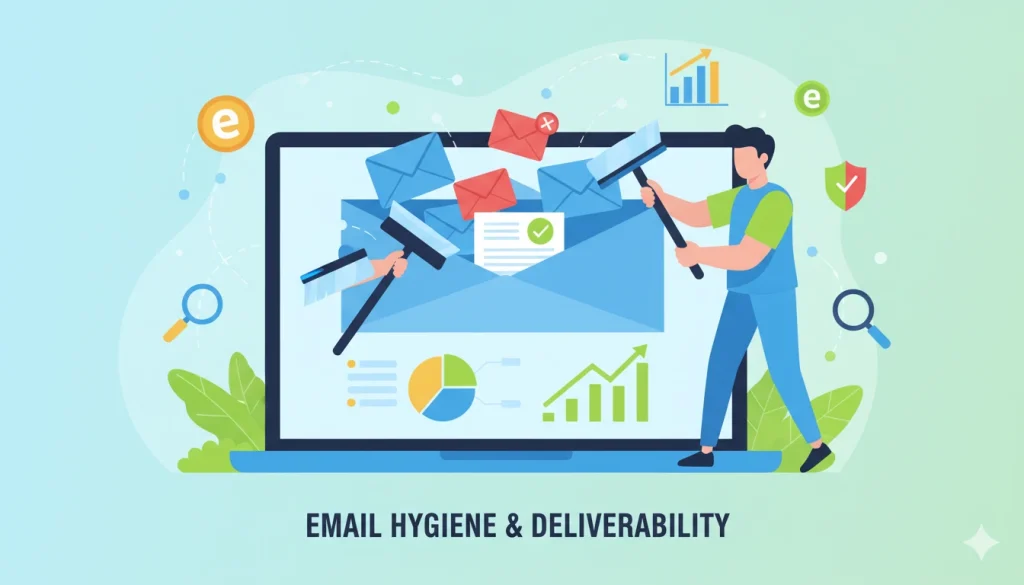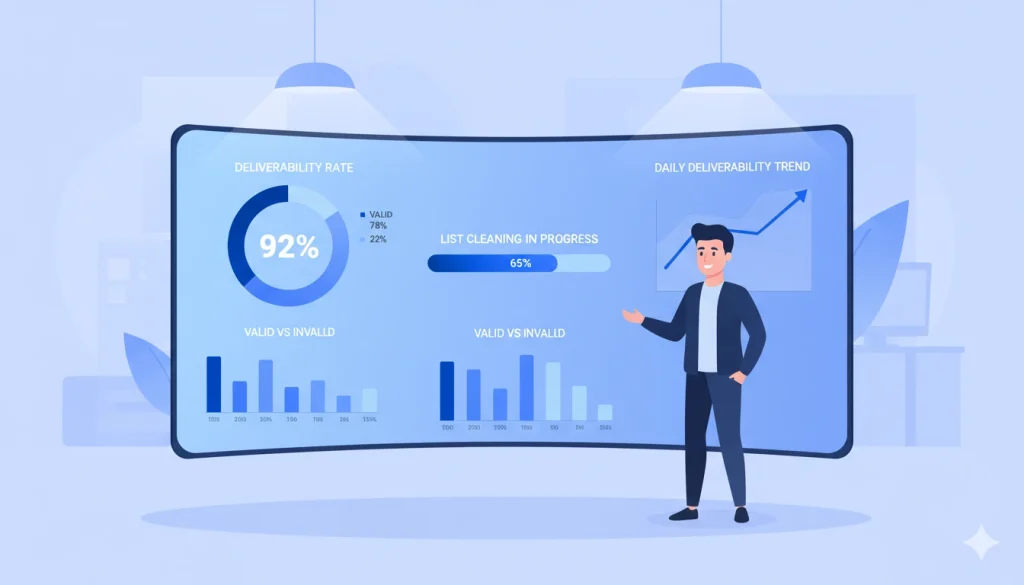If you’ve ever watched your carefully crafted emails vanish into spam folders, you know how frustrating it feels. You put in the work—writing great content, segmenting audiences, designing visuals—and still, your emails don’t reach real people. That’s where sender reputation quietly decides your fate. Think of it as your email credit score. When it drops, inboxes close their doors. The good news is, you can control it. And one of the most effective ways is through smart email list verification. Let’s break down how it actually works, why it matters, and how you can use it to your advantage.
Why Sender Reputation Matters More Than You Think
You can write the best email in the world, but if inbox providers don’t trust you, no one will see it. Your sender reputation is what tells them whether to deliver your message or hide it in spam.
What Inbox Providers Actually “Score” You On
Every major provider—Gmail, Outlook, Yahoo—uses a mix of data points to score your reliability. They look at engagement rates, spam complaints, bounce frequency, authentication (SPF, DKIM, DMARC), and how consistently you send. If those signals dip, inbox placement suffers fast.
The Domino Effect Of Poor Reputation
One bad campaign can trigger a chain reaction. Higher bounces or complaints lead to filters tightening, open rates dropping, and your “trust level” falling even further.
How List Quality Quietly Drives Everything
Good deliverability always starts with a clean list. When your subscribers are real, active, and interested, everything improves—open rates, sender scores, and conversions. That’s why verification isn’t just a technical step; it’s reputation insurance.
What Email List Verification Really Does Under The Hood
Let’s get practical for a moment. Email verification isn’t a mystery—it’s a system of checks designed to make sure every address on your list can actually receive mail.
The Technical Checks That Matter
A solid verification process runs a full diagnostic. It checks for syntax errors, verifies domain and MX records, pings the mailbox for existence, and flags catch-all or role-based accounts like info@ or sales@ that rarely engage.
Spotting Risky Addresses Before They Hurt You
Some addresses are worse than invalid—they’re dangerous. Disposable emails, spam traps, or known complainers can quietly tank your deliverability. Verification tools catch these before they ever enter your system.
Confidence Categories And How To Use Them
After verification, every address gets classified: verified, risky, or undeliverable. This isn’t just for show. You can send safely to verified ones, monitor risky ones with caution, and remove undeliverables immediately. It’s clean, clear, and keeps your sender score out of danger.
The Measurable Wins You Can Take To Your CFO
Email list verification isn’t just good practice—it’s measurable ROI. When your list is clean, you save money, protect your brand, and improve results you can actually report.
Fewer Hard Bounces, Lower Complaint Rates
Hard bounces are reputation killers. They tell inbox providers you’re not maintaining your list. Verification eliminates invalid addresses before you send. It also filters out habitual complainers who hit “spam” more than “open.”
Better Inbox Placement And Engagement Lift
Once bad addresses are gone, inbox placement improves. You’ll notice more opens, more clicks, and a smoother feedback loop. The more engagement you get, the stronger your reputation becomes.
Real Dollars: CPM, ESP Costs, And List ROI
You pay for every email you send, whether it reaches a person or a dead inbox. A verified list cuts wasted sends and keeps your ESP costs efficient. That’s not just deliverability improvement—it’s budget optimization your finance team will appreciate.
Verification Across The Lifecycle, Not Just “Before A Blast”
Many marketers only think about list verification right before a big campaign. That’s too late. Smart senders treat it as an ongoing process that starts from the moment someone joins your list.
Real-Time Checks At Signup
Real-time verification tools integrate with your signup forms or CRM. They instantly confirm if an email is valid and prompt users to correct typos like “gmial” instead of “gmail.” It’s an effortless way to keep bad data out.
Pre-Campaign Hygiene For Aging Lists
Before you re-engage old subscribers or run a seasonal promotion, run a bulk verification. It helps you avoid sending to addresses that have gone inactive or expired since your last campaign.
Ongoing Cadence That Actually Works
List quality changes over time, so create a rhythm that fits your email volume. For heavy senders, monthly checks make sense. For moderate senders, quarterly is fine. And always verify before major launches. It’s a habit that protects your reputation year-round.
Implementation Without The Headaches
You don’t need a developer army or endless setup time to start verifying emails properly. With the right approach, it fits neatly into your existing email marketing strategy.
Picking The Right Mode: API, Bulk, Or Both
Use the API for real-time checks at signup, so invalid addresses never enter your system. For migrations, imports, or big pre-send sweeps, bulk verification is faster and more efficient. This keeps your sending reputation stable and helps messages land consistently in recipients’ inboxes.
Integration Points That Save Time
Most verification platforms connect directly with your CRM, CDP, or email service provider. That way, you can automate list hygiene and maintain healthy ip and domain reputation without manual work. You can even link third-party tools to run periodic scans as part of your normal email marketing campaigns.
Data Stewardship You Can Stand Behind
Always choose providers that encrypt data, respect privacy laws, and maintain SOC2 or GDPR readiness. Responsible data handling builds trust with mailbox providers and strengthens your email sender reputation over time.
Reduce Risk Before It Starts: Policies That Improve Your Email Sender Reputation
You can’t control every factor affecting deliverability, but you can reduce risk by setting smart, proactive policies.
Double Opt-In And Clear Consent Wins
Using double opt-in confirmation ensures each subscriber genuinely wants to hear from you. It’s a surefire way to lower your spam complaint rate and boost email deliverability. Confirmed subscribers also signal to internet service providers that you’re a legitimate sender, not another spammer.
Sunset Policies That Respect Inactivity
Inactive contacts hurt engagement and drag down your reputation score. Build a habit of removing or verifying those addresses before launching a re-engagement campaign. This helps prevent deliverability problems and improves your email performance overall.
Smart Segmentation By Risk Level
Not every address deserves the same treatment. Segment your list based on activity, source, and verification results. Send emails less frequently to risky segments and prioritize first-party data from known, engaged recipients. It’s a smart balance between reach and safety.
Strengthen Your Sending Posture Beyond The List
Even with a verified list, your infrastructure matters just as much. The way you send emails directly affects how mailbox providers view you.
Align Authentication And Domain Reputation: SPF, DKIM, And DMARC
Strong authentication records prove identity and keep spam filters from blocking you. They also protect your sending domain from spoofing, which is key to maintaining a good reputation with major email clients.
Warm Up New Domains And IPs
When you start sending from a new ip address or domain, warm it up gradually. Begin with your most engaged users and scale slowly. That natural growth signals trustworthy sending behavior and helps you earn a good sender reputation faster.
Monitor What Matters Weekly
Keep tabs on ip reputation, domain reputation, and complaint trends. Tools like Google Postmaster Tools or other free tools help you spot red flags early. A little weekly monitoring can prevent big deliverability issues later and ensure consistent inbox placement.
Troubleshooting: When Things Go Sideways Anyway
Even experienced marketers hit bumps. Maybe an ISP throttles your mail, or emails hit the spam folder without warning. Don’t panic—diagnose, adjust, and rebuild.
If You Hit A Blocklist Or Spam Folder Wall
Pause campaigns to avoid further damage. Verify your list again, check authentication, and confirm your dedicated ip address isn’t listed anywhere. Work with your ESP to submit delisting requests backed by solid evidence of compliance.
Diagnose With Precision, Not Guesswork
Review your sending history, content, and subject line performance. Compare engagement by source and timeframe. Poor engagement, especially low click-through rate or high unsubscribe, can expose deeper deliverability rates or sending volume issues.
Rebuild Trust Deliberately
Once you stabilize, start sending only to verified, highly engaged contacts. Gradually increase volume and reintroduce other senders once reputation metrics improve. Treat your email sender reputation like an asset—it takes time to build but pays dividends every time you send emails confidently and consistently.
What It Really Takes to Improve Sender Reputation
Email list verification isn’t a silver bullet—it’s the foundation that helps improve your sender reputation and keep every campaign performing at its best. When you validate addresses early, maintain list hygiene, and pair that with high-quality content, your emails hit where they belong. A strong email sending reputation depends on many factors, from authentication and consent to how recipients mark your emails. By combining these best practices, you boost email reputation, reduce risk, and strengthen deliverability. If your email campaign needs dependable accuracy, our email list verification tool ensures your email content consistently reaches real inboxes—not spam folders.

